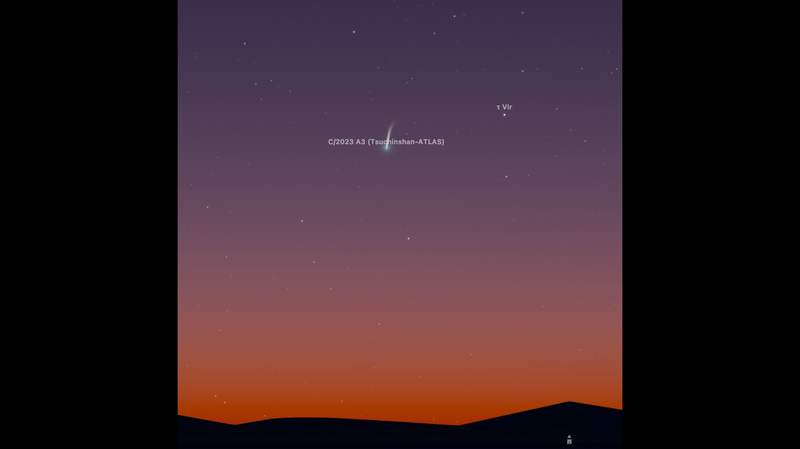Get ready, stargazers! 🌌 A comet that hasn't graced our skies since the era of early humans is making a comeback this October. Meet comet C/2023 A3, also known as Tsuchinshan-ATLAS, a celestial visitor that's about to put on a show after a whopping 60,000-year journey around the sun.
What's the Buzz About?
Discovered on January 9, 2023, by the Xuyi Observation Station of the Purple Mountain Observatory (PMO) of the Chinese Academy of Sciences, this comet is anything but ordinary. It's been traveling through the cosmos for millennia, and now it's headed our way. According to NASA, the comet will make its closest approach to Earth around October 12.
So, When Can We See It? 👀
Mark your calendars for mid-October! For those in the Northern Hemisphere, the best time to catch a glimpse is just after sunset on October 12. Look towards the western sky in the constellation Virgo. You'll have a window of about 10 to 20 minutes to spot it with the naked eye.
But don't worry if you miss it that day. As October progresses, the comet's position relative to the sun improves, giving us longer viewing times. By late October, you'll have up to three hours after sunset to enjoy this rare sight.
What's a Comet, Anyway? ☄️
Think of comets as cosmic snowballs made of ice, dust, and rocky materials. When they get close to the sun, they heat up, releasing gas and dust that form a glowing head (called a coma) and a spectacular tail that stretches across the sky.
Why Is This Comet Special?
The comet's last visit was during the Stone Age, and it's not set to return for another 60,000 years! Talk about a once-in-a-lifetime (or many lifetimes) event. \"Naked-eye-visible comets are rare enough as it is, and this one has the potential to be amongst the brightest that we've seen in the last few decades,\" says Gregory Brown, senior public astronomy officer at the Royal Observatory Greenwich.
Don't Miss Out! 🌠
This is your chance to witness a piece of cosmic history. Grab your friends, find a good spot away from city lights, and look up. Who knows—you might just catch a glimpse of something that won't happen again for tens of thousands of years!
Reference(s):
'Once-in-60,000-years' comet to light up night skies in October
cgtn.com




